What is sycamore and how to grow it?

The white fake maple, also known as sycamore, is common in Europe, the Caucasus and Asia Minor. Wood is highly regarded not only for its durable wood, but also for its attractive appearance.
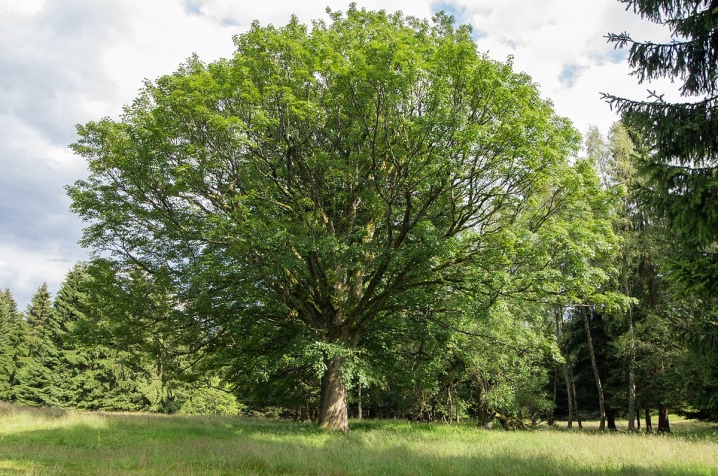
What it is?
Yavor is a large deciduous tree with a wide round crown. It can grow up to 30-35 meters in height. The plant has a smooth gray bark, which over time becomes coarser and resembles scales in its appearance. The leaves of the white maple are large, with a long petiole and jagged edges. In the spring they are yellow-red in color, but over time they turn dark green and become covered with small specks.
Flowers appear on the tree in spring. They are yellow-green in color. There are only about 20-50 flowers in each inflorescence. The seeds appear on the tree about six months after pollination, usually in the middle of autumn. They are spherical and are located in pairs in lionfish.
This arrangement contributes to the distant spread of seeds.



Description of the best varieties
Today there are several varieties of white maple.
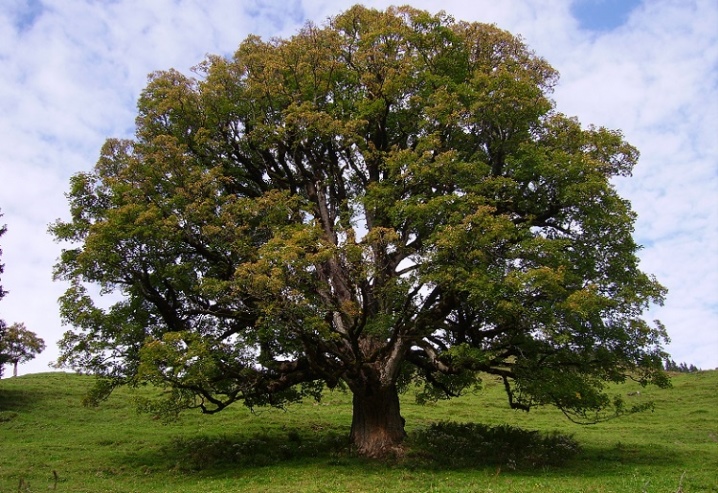
"Atropurpureum"
This type of maple is also called fan-shaped. The tree originated in Japan but is popular all over the world. Differs in small growth. The average height of an adult sycamore is 5 meters. It grows rather slowly. But at the same time it is a long-liver and can live up to 100-110 years. The tree has a dense crown, consisting of bright leaves. The inner side of each leaf is colored dark lilac.
This maple can be safely used to create hedges or to form alleys.
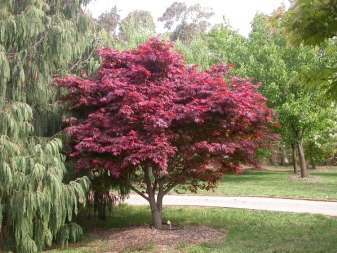
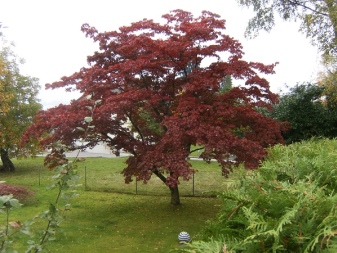
"Diamondissimum"
This type of maple was developed in England in 1905. This fake maple tree is also small in height. Its crown is round and consists of five-lobed and three-lobed leaves. The tree looks very beautiful. In the first weeks after blooming, the leaves are bronze-pink in color, but over time they become yellowish-golden. Later, specks appear on them. In this case, the underside of the leaves always remains green.
The plant blooms in late May or early June. Fruits appear in late summer and ripen in mid-October. The bark of the white maple tree has a dark gray color. Its root system is pivotal.
This maple variety is great for both group and single plantings.
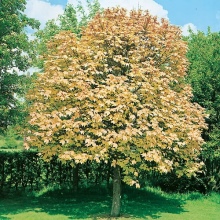
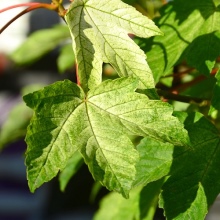
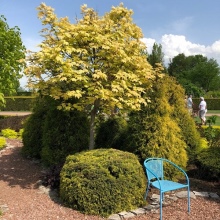
"Leopoldi"
This variety of white maple is also called "red" because of its bright red foliage. It grows up to 15 meters in height. His crown is beautiful, has a pyramidal shape.
It can be used to decorate both urban areas and private areas.
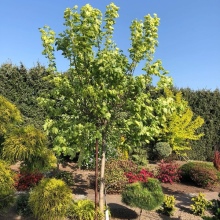

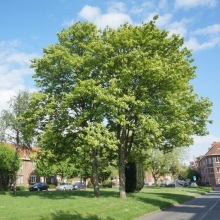
Landing
For planting a sycamore, you should choose either light or slightly shaded areas. In the dark, the tree develops slowly and poorly. It is recommended to plant white maple far from all kinds of buildings. In this case, the tree must be protected from strong gusts of wind. The soil for growing is neutral and well-drained.
Planting sycamore is best done either in spring or autumn. The weather on the day of disembarkation should be warm and not windy. It is worth digging holes for seedlings deep enough. The entire root system should fit in them.If an additional layer of drainage is required, then the pit should be made 20 centimeters deeper. From drainage materials, you can choose stone chips or fine gravel. When planting several maples together, leave a distance of at least 2 meters between them.
It is recommended to prepare the sycamore pit in advance, about 2 weeks before planting. This is done so that the earth has time to settle. It is filled with ordinary earth with a small admixture of humus. After planting maples, they need to be well watered. One tree takes from 20 to 30 liters of water.
After two or three days, when the earth has settled, it is recommended to cover the trunk circles with an additional layer of soil.
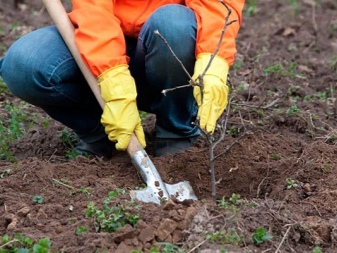
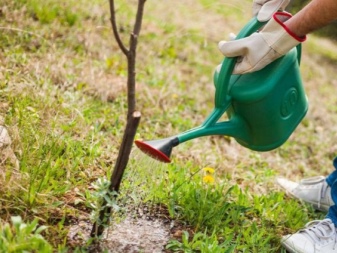
Care features
There is nothing difficult in caring for a maple. First of all, it is worth remembering that this is a moisture-loving plant. Water it abundantly. In spring and autumn, the procedure must be repeated once a month. In summer, especially hot and dry, once a week. Young seedlings need more water. One tree takes about 20 liters. An adult plant needs half the water. After watering the sycamore, the soil near the trunk circle must be loosened well, while removing all the weeds.
It is best to fertilize maples with organic matter. High-quality humus, manure or peat will do. It is recommended to apply top dressing once a season. In the spring, it is also worth using nitrogenous fertilizers. In winter, feeding is not carried out. In order for a young sycamore to survive the winter normally, it needs to be well insulated. At the end of autumn, before the first frosts, the root system should be well covered with spruce branches and dry leaves. After a few years, the tree will grow up and will be able to survive the winter frosts on its own. They will only need to be covered if the temperature drops below –20 ° C.
The tree also needs annual sanitary pruning. It is held in early spring. At this time, all damaged and frozen shoots are cut off. In addition, it is in the spring that you can correct the crown by cutting off all curved or young branches.
You also need to regularly get rid of young growth.
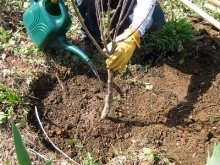
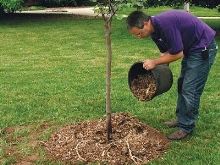
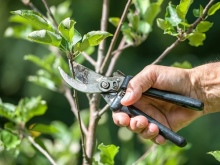
Reproduction methods
For propagation, as a rule, seeds, cuttings or ready-made seedlings are used.

Cuttings
This method is most often chosen by experienced gardeners. For planting, you can use cuttings that remain after spring pruning. Each branch should have several leaves and buds. In this case, the plant will definitely take root. The branch cut must be carefully treated with special root-forming solutions.
After a day, the prepared sprout can be placed in the substrate. A mixture of turf or leafy soil and humus is suitable. The ground must be well moistened, and the shoots must be additionally sprayed with warm water. It will be possible to plant sprouts next spring. When planting, it is important to leave the root collar above the ground.
It is advisable to cover the top layer of soil with a layer of mulch.
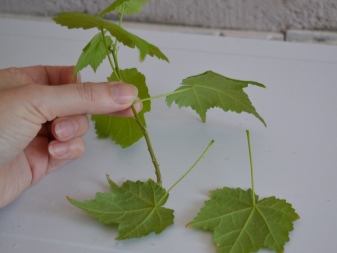

Seed propagation
Using seeds for propagation will make it much easier for the tree to adapt to the local climate in the future. Seeds must be collected by hand in the fall, and then soaked in water for a day. The seeds prepared in this way are sown in a slightly moistened substrate. Seedlings must be carefully covered with foil and the container with them should be placed in a warm and sunny place. Seedlings should be regularly ventilated and watered. Young shoots will sprout in a few seasons.
It will be possible to plant them in open ground only when they are sufficiently strong.
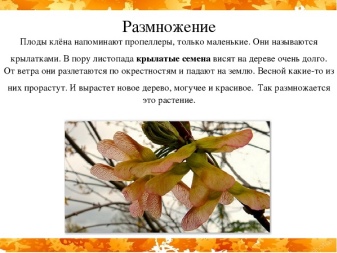
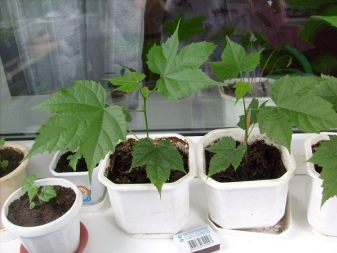
Saplings
The easiest and fastest way to grow a new tree is to buy a seedling in a special nursery. The purchase must be treated carefully. There are a few things to watch out for.
- It is best to buy seedlings in the fall. The best time to buy is mid-October or early October.
- You need to very carefully examine the roots of the plant.In many nurseries, seedlings are dug out not by hand, but using a special technique. In the process, the roots of young plants can be damaged. Therefore, you need to ensure that there are no visible defects on them.
- Leaves should not be withered.
If everything is in order with the seedling, you can plant it immediately after purchase.
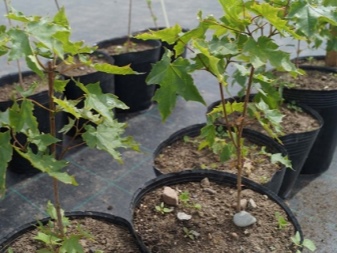
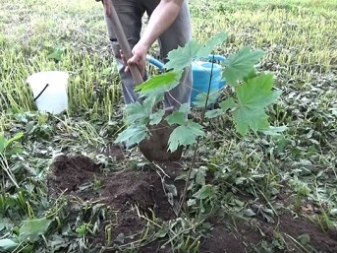
Diseases and pests
Sycamore is resistant to most diseases and small pest attacks. But there are still a number of problems that gardeners have to face. First of all, you should beware of common diseases.
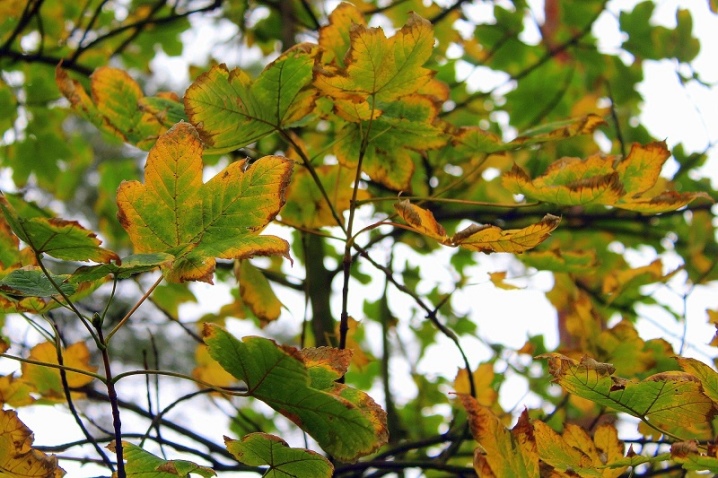
Coral spot
In case of illness, the leaves are covered with burgundy spots. Having noticed them, you need to immediately start fighting the disease. Infected branches must be pruned and destroyed. Places of cuts must be thoroughly disinfected with garden varnish.
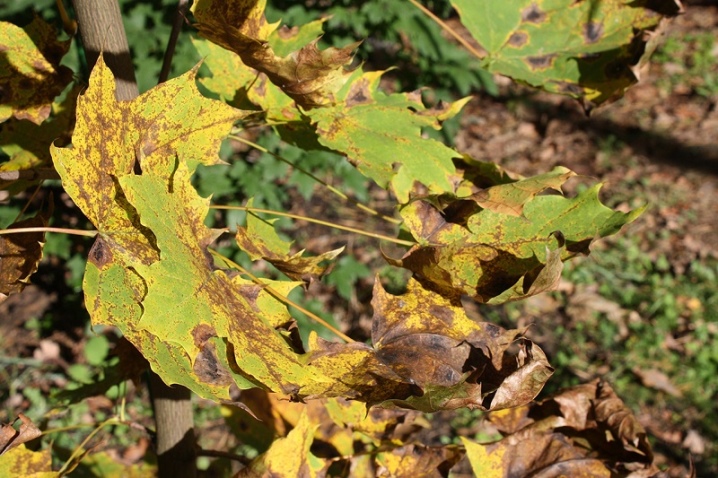
Wilt
This is one of the most dangerous diseases that can even kill a tree. It is not difficult to recognize it. Green streaks appear on the bark of the trunk. Over time, the trunk turns completely green. Further, the branches and roots of the plant dry out. To combat this fungal disease, it is worth using fungicides. Special attention should be paid to soil cultivation. It needs to be sprayed with a five percent solution of copper sulfate.
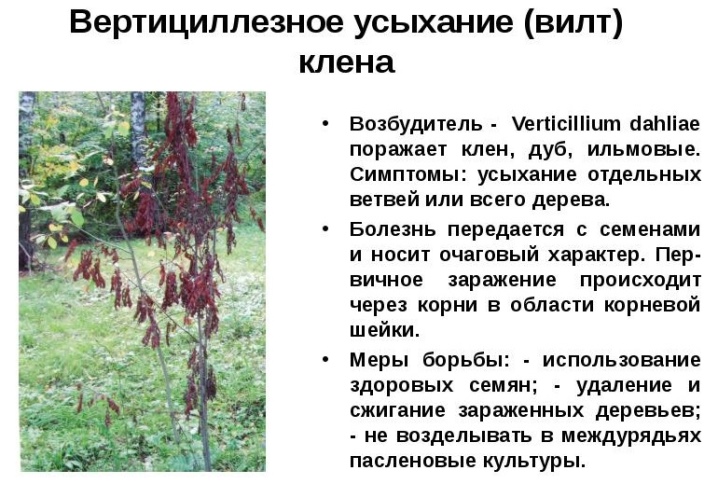
Powdery mildew
When this disease affects maple, its leaves become covered with a dense white bloom. Over time, the affected leaves turn brown and dry out. To get rid of this disease, you need to remove not only individual leaves, but all branches as a whole. The fact is that the infection persists in the bark of the affected shoots. Therefore, if they are not removed, the disease will spread further.
Also sycamore should be protected from insects that can harm it. This list includes:
- mealbugs;
- whitefly;
- maple weevils.
It is also worth fighting with them immediately after the leaves damaged by pests have been noticed. The branches must be cut and burned. For spring prophylaxis, sycamore must be treated with special means.
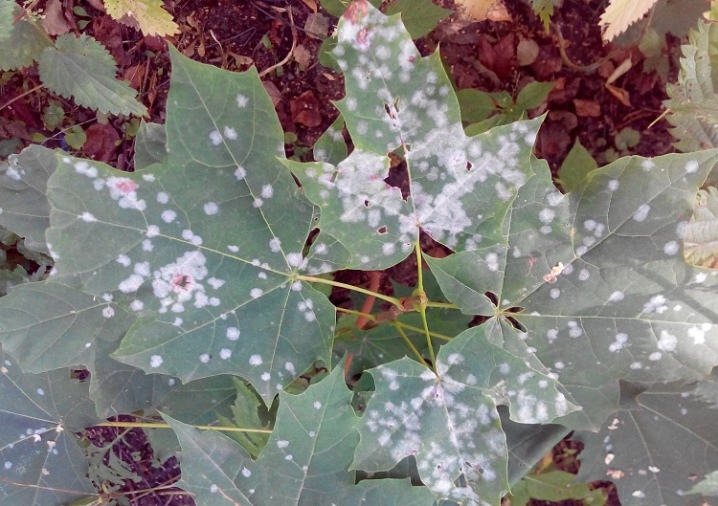
Application in landscape design
Yavor attracts gardeners by the fact that it does not lose its decorative effect even in late autumn or winter. In addition, the tree fits perfectly into various flower and shrub compositions, combining equally well with ornamental shrubs, and with perennial flowers, and with other deciduous trees. Therefore, in landscape design, it is used quite often.
Because white maple thrives in urban environments, it is often planted along roads or in parks. Sycamore is used in both group and single plantings. It looks especially beautiful against the background of coniferous trees and shrubs. Also, this tree is often found on the banks of various bodies of water. For example, in parks near ponds or small lakes.
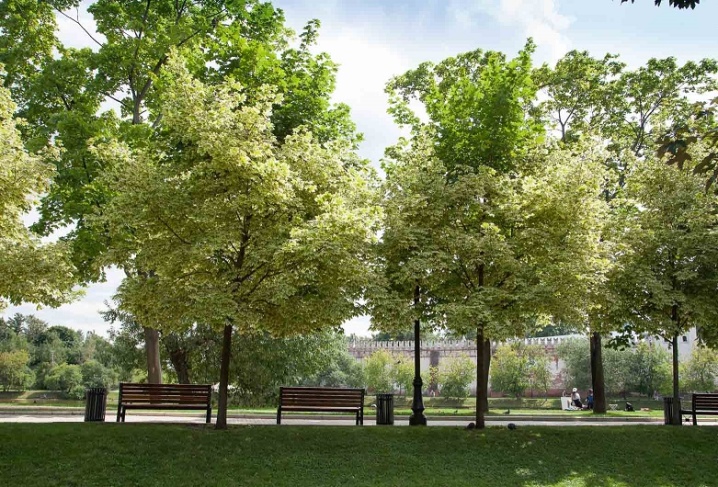
The white maple tree has a fairly large crown, which means it gives a good shade. Therefore, it is often planted next to the gazebo. In this case, even in a sultry summer, it will be possible to hide in the yard from the heat. Low-growing varieties such as Atropurpureum can be used to form hedges. Also, such a tree with bright leaves will perfectly fit into the design of a modern Japanese garden.
Our ancestors believed that maples protect the family, so they were planted in pairs near the house in which the young family settled. You can use this time-tested trick even now. Two maples, planted on opposite sides of the site, will look beautiful in both large and small courtyards.
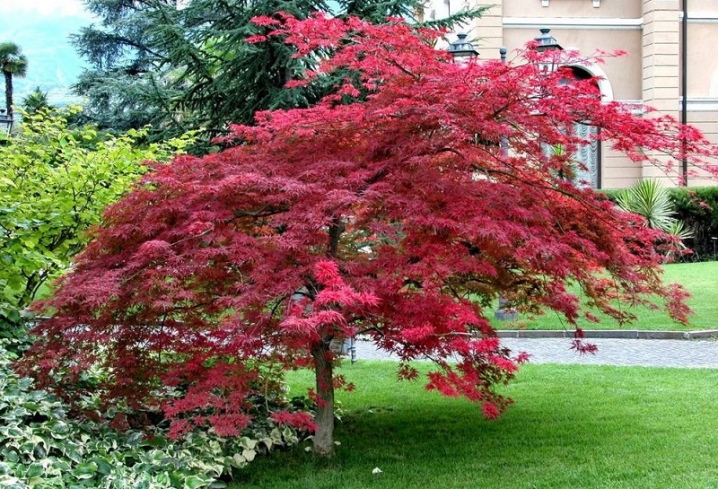
You can learn how to properly plant a maple in the video below.



































































The comment was sent successfully.